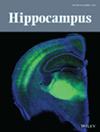Development of the SPEAR Model: Separate Phases of Encoding and Retrieval Are Necessary for Storing Multiple Overlapping Associative Memories
Abstract
In keeping with the historical focus of this special issue of Hippocampus, this paper reviews the history of my development of the SPEAR model. The SPEAR model proposes that separate phases of encoding and retrieval (SPEAR) allow effective storage of multiple overlapping associative memories in the hippocampal formation and other cortical structures. The separate phases for encoding and retrieval are proposed to occur within different phases of theta rhythm with a cycle time on the order of 125 ms. The same framework applies to the slower transition between encoding and consolidation dynamics regulated by acetylcholine. The review includes description of the experimental data on acetylcholine and theta rhythm that motivated this model, the realization that existing associative memory models require these different dynamics, and the subsequent experimental data supporting these dynamics. The review also includes discussion of my work on the encoding of episodic memories as spatiotemporal trajectories, and some personal description of the episodic memories from my own spatiotemporal trajectory as I worked on this model.

 求助内容:
求助内容: 应助结果提醒方式:
应助结果提醒方式:


